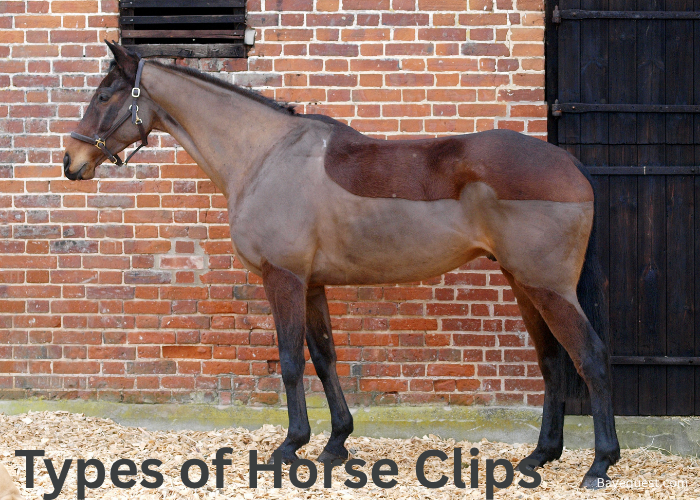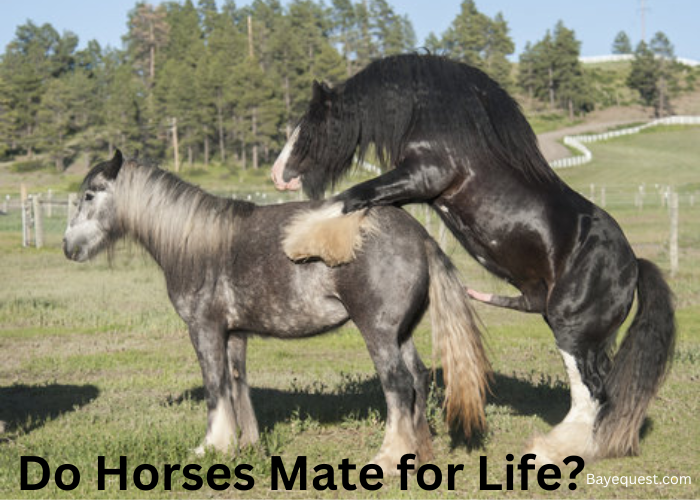A thick winter coat might look cozy, but for working horses, it’s a problem. Sweat builds up, drying takes forever, and skin issues creep in fast.
That’s why smart horse owners clip. But not every horse needs the same clip. Some styles keep the legs warm. Others strip it all.
In this guide, you’ll learn the most common types of horse clips, when to use them, and how to pick the one that fits your horse best.
What is Horse Clipping?
Horse clipping is the process of shaving or trimming a horse’s coat using electric clippers.
It’s usually done in cooler months to help horses who are in work stay dry and comfortable after exercise.
When a horse sweats during a ride, a thick winter coat traps the moisture.
This makes drying slow and increases the risk of chills, skin infections, or rubbing under tack. Clipping removes parts of the coat, sometimes just a little, sometimes all of it, so the horse can cool down faster and stay cleaner.
The type of clip you choose depends on how much your horse works, the weather, and how much time you have to groom and rug.
Read also: What is Pin Firing?
Factors to Consider Before Clipping
Before you switch on the clippers, think about your horse’s lifestyle, health, and comfort. Clipping isn’t just about looks. It changes how your horse stays warm, cool, and clean.
Here are the key things to consider:
Workload: Horses in regular work sweat more and benefit from more clipping. A lightly ridden horse may only need a partial clip, or none at all.
Weather: Cold climates require careful clipping and rugging. A full clip in freezing weather means your horse will need layered rugs and shelter.
Turnout time: If your horse lives outside most of the day, keep more coat for warmth. Horses kept indoors can be clipped more fully with proper rugs.
Rug availability: Clipped horses lose natural insulation. Ensure you have the correct rugs in various weights before you clip.
Coat type and breed: Some breeds grow thicker coats than others. Ponies and native types may need less clipping than thoroughbreds or warmbloods.
Show schedule: If your horse competes, a tidy clip can help appearance and grooming. Plan around show dates and allow time for the coat to regrow if needed.
Age and health: Older or underweight horses may struggle to stay warm after a clip. Always put comfort first.
Benefits of Clipping Your Horse
Here are the key benefits of clipping your horse:
1. Prevent overheating
A thick winter coat holds heat, even after your horse finishes working. Clipping helps your horse cool down faster, reduces sweating, and makes post-exercise drying much easier.
This prevents chills and discomfort, especially during cold months.
2. Promotes skin health
Excess sweat trapped in a long coat can cause skin issues like rain rot, fungal infections, or clogged pores.
Clipping allows the skin to breathe, keeps the coat cleaner, and makes it easier to spot any problems early.
3. Improves aesthetics
A clean, tidy clip can make your horse look sharp and well-groomed, especially in the show ring.
It highlights muscle tone, neatens the face and legs, and gives your horse a polished, professional look.
4. Managing abnormal coat growth
Some horses, especially those with Cushing’s disease, don’t shed properly and grow thick, patchy coats year-round.
Clipping helps control this overgrowth, improves comfort, and keeps them cooler in warmer months.
5. Supports anhidrotic horses
Anhidrosis is a condition where a horse can’t sweat properly. These horses overheat easily.
Clipping helps reduce body heat, improves cooling, and makes it easier to manage their temperature during exercise.
6. Maintains basic grooming
Clipping makes daily grooming quicker and more effective. With less hair, dirt and sweat don’t cling as much, and you can keep your horse looking and feeling clean with less effort.
7. Speeds up drying time
After a bath, rain, or sweaty ride, a clipped horse dries much faster than one with a full winter coat. This reduces the risk of chills and allows you to rug or turn out your horse sooner.
8. Encourages better thermoregulation with rugs
Once clipped, you control your horse’s temperature more precisely by adjusting rugs. This can be more reliable than relying solely on a horse’s natural coat, especially in changing weather conditions.
9. Easier wound monitoring and treatment
With less hair, it’s easier to see cuts, swellings, and skin irritations. You can clean and treat any issues quickly without trimming around the injury every time.
10. Supports metabolic horses
Horses with metabolic issues like EMS or PPID (Cushing’s) often have trouble shedding. Clipping helps keep them comfortable and avoids overheating in spring and summer.
Types of Horse Clips
Clipping isn’t one-size-fits-all. The right clip depends on how much your horse works, the climate, and how much coat you want to remove.
Below is a breakdown of common horse clips, grouped by workload level:
Clips for Light Work
These styles remove minimal hair and are best for horses that do occasional riding or light exercise.
Low Irish Clip/Neck and Belly Clip
The Low Irish Clip removes hair from the lower part of the neck, chest, and belly areas where sweat tends to build up most, even during light riding.
The rest of the coat, including the legs, back, and sides, is left untouched. This clip is ideal for horses ridden occasionally in cold weather.
It allows the horse to dry quicker after a ride without compromising warmth in the field.
Because it leaves much of the body covered, it reduces the need for heavy rugging. It’s also a good option for owners who want some of the cooling benefits of clipping without going too far.
It’s quick, simple, and suitable for nervous horses or those unfamiliar with clippers.
Bib Clip (Neck Clip)
The Bib Clip, also called the Neck Clip, is the most minimal clipping style. It removes hair from the front of the neck and upper chest, sometimes extending slightly under the jaw or to the front of the forelegs.
This clip is designed to help horses in very light work cool down without compromising their natural warmth. It’s ideal for horses that are hacked lightly once or twice a week or for older horses on limited exercise.
The Bib Clip is also useful for horses new to clipping as it’s fast, safe, and doesn’t require full-body handling.
Best of all, it rarely requires any rugging. This clip is also a practical option for owners who need to keep grooming quick and easy during winter.
Clips for Light to Medium Work
These styles balance warmth and cooling. They are ideal for horses ridden regularly but not in full training.
Irish Clip
The Irish Clip is a step up from the bib and low Irish clip.
It removes hair in a sweeping diagonal line that starts behind the ear, goes down the neck and chest, and continues along the belly, leaving the rest of the coat intact.
This clip is ideal for horses in regular, low-to-moderate work during the cooler months. It targets the areas where sweat builds up the most while keeping the back, loins, and legs covered for warmth.
The Irish Clip is a favorite for riders who want function without full-body exposure. It helps the horse dry faster after exercise and reduces the risk of skin issues caused by trapped moisture.
Because the key muscle groups remain covered, it’s also a great choice for horses turned out daily.
A medium-weight rug may be needed depending on the weather and thickness of the remaining coat.
Low Trace Clip
The Low Trace Clip removes hair from the underside of the neck, chest, and belly. A strip is clipped along the lower side of the horse, tracing where the sweat forms during riding.
The rest of the coat, including the back, legs, and upper sides, is left untouched. This makes it an excellent choice for horses in consistent but not intense work.
It allows the horse to cool off efficiently without leaving them vulnerable to cold weather.
This clip is popular among riders who engage in light schooling or trail riding during the fall and winter seasons. It’s also handy for managing grooming and drying time after exercise.
Since most of the body remains insulated, rugging is usually minimal, especially for horses with shelter or good natural conditions.
Clips for Moderate to Hard Work
These clips are ideal for horses in consistent training through fall and winter.
The Trace Clip
The Trace Clip is one of the most popular and versatile clipping styles. It removes hair along the neck, chest, belly, and lower sides, following the natural “sweat lines” of a horse in regular work.
The back, loins, and legs are left covered to retain warmth. There are different versions, low trace, medium trace, and high trace, depending on how much coat you want to remove.
This clip is perfect for horses that work several days a week, especially in cold or wet climates.
It helps regulate temperature, cuts down drying time, and reduces the risk of fungal skin conditions caused by damp coats.
Because large areas remain covered, it’s still turnout-friendly. You may need a mid-weight or heavy rug depending on the weather and how much hair was taken off.
The Blanket and Chaser Clip
The Blanket Clip removes hair from the neck, chest, belly, and flanks, but leaves a large “blanket” of coat on the back, loins, and top of the rump.
This patch of hair helps retain warmth over major muscle groups while still allowing the horse to cool off after work. Legs are usually left unclipped for added protection against mud and cold.
The Chaser Clip is a variation of the blanket clip. Instead of following the curved shape of a blanket, it features a straighter, diagonal line that runs from the wither down toward the belly.
It removes roughly the same amount of coat as the blanket clip, but with a slightly different outline.
Both clips are great for horses in moderate work during the colder months.
They provide efficient cooling and reduce drying time while still offering warmth and weather protection.
Rugging is essential with these clips, especially for horses turned out or in windy areas.
Clips for Horses in Very Hard/Fast Work
Horses in intense work need maximum cooling. These clips remove nearly all the coat and are best for competition horses with proper rugging and stable care.
The Hunter Clip
The Hunter Clip is designed for horses in intense, fast-paced work, such as eventing, fox hunting, or high-level competition.
In this clip, nearly the entire body is shaved, including the neck, chest, shoulders, flanks, and belly. However, the legs are left unclipped to provide protection against brush, mud, and cold.
A saddle patch is also left intact to prevent rubbing during long rides.
This clip keeps the horse cool and clean during heavy exercise, especially when they sweat frequently and heavily. It allows the coat to dry quickly, prevents overheating, and makes post-ride care faster.
That said, horses with this clip must be rugged properly and often need neck covers and stable rugs to stay warm. It’s not ideal for horses turned out 24/7 in harsh weather unless you can manage the extra care involved.
The hunter clip is practical, professional, and efficient, but it’s best suited for horses in full work with owners prepared to handle the rugging and maintenance that come with it.
The Full Body Clip
The Full Body Clip removes all the coat from the neck, belly, flanks, back, hindquarters, legs, and sometimes even the face.
This clip is used for horses in very hard, regular work or for those being shown at a high level, where appearance and performance both matter.
It creates a sleek, polished look and keeps the horse cool and easy to clean after intense sessions.
Because the entire coat is gone, rugging is essential, and not just one rug. Horses with full clips may require layered rugs, neck covers, and stall wraps, depending on the weather conditions.
This clip is also high maintenance as the coat won’t provide any natural protection from cold, wind, or rain.
The full clip should only be used on horses in controlled environments, such as competition yards or those stabled with attentive care.
For owners willing to put in the time, it’s the cleanest and most efficient option for managing high-performance horses.
When to Clip Your Horse
The best time to clip depends on your horse’s workload, coat growth, and the weather. Most horses get their first clip in early fall, around September or October, when their winter coat starts coming in.
Clipping too early can lead to faster regrowth, so timing matters.
If your horse is in regular work, you may need to clip every 4 to 6 weeks to keep the coat short and manageable. Some horses need multiple clips throughout winter, especially if they sweat heavily or are preparing for shows.
Always clip early in the day, ideally when the horse is dry and warm, and make sure you have the right rugs ready afterward.
Which Clip is Right for Your Horse?
Choosing the right clip depends on your horse’s routine, living conditions, and its level of sweating.
A lightly ridden horse might only need a bib or low Irish clip, while a horse in daily training may benefit from a trace or blanket clip.
If your horse is in heavy work or competition, a hunter or full-body clip offers the best cooling, but it requires more care and rugging.
Also consider how often you ride, where your horse resides, and whether you have sufficient time for extra grooming and rug changes.
How to Clip Your Horse
Clipping your horse takes patience, the right tools, and a calm approach. Here’s a step-by-step guide to help you get it done safely and neatly:
Step 1: Prepare your horse
Groom your horse thoroughly to remove dirt, sweat, and loose hair. If possible, bathe and dry them beforehand. A clean coat helps clippers glide smoothly and prevents blade clogging.
Step 2: Choose the right location
Clip in a quiet, well-lit area with minimal distractions. Avoid windy spots or slippery floors. Tie your horse securely using a quick-release knot or cross ties.
Step 3: Use the right equipment
Use sharp, well-oiled clippers and the correct blade for the type of clip you’re doing. Keep blade coolant or lubricant on hand to prevent overheating.
Step 4: Start slow and calm
Begin in a less sensitive area, like the shoulder. Work with steady strokes, moving with the direction of hair growth, and then against it if necessary for a cleaner finish. Take breaks if your horse becomes restless.
Step 5: Follow the clip lines
Stick to the outline of the clip style you’ve chosen. Use chalk or a guide if needed to keep lines even and symmetrical.
Step 6: Check the blades often
Feel the blades regularly to make sure they’re not too hot. Overheated blades can burn the horse’s skin.
Step 7: Finish and clean up
Once done, brush off loose hair and wipe your horse down with a warm cloth. Reward them for standing still. Clean your clippers thoroughly, oil the blades, and store them safely.
When to Avoid Clipping Your Horse
Clipping isn’t always the right choice. In some situations, it’s better to leave the coat alone to protect your horse’s health and comfort.
Here are key times to avoid clipping:
1. If your horse lives out full-time without adequate rugging. Removing the coat can leave them vulnerable to cold, rain, and wind.
2. In very cold weather without proper rugs or shelter. A clipped horse needs extra care to stay warm.
3. For young, nervous, or unhandled horses. Clipping can be stressful, especially if they’re not used to the noise or sensation.
4. If your horse is sick, underweight, or recovering. They need their natural insulation to maintain body condition.
5. If your horse is retired or not in work. There is usually no need to clip unless there is a medical reason.
How Often Should I Clip My Horse?
Most horses need clipping every 4 to 6 weeks during the cooler months, depending on how fast their coat grows and how much work they’re doing.
Some horses grow thick coats quickly and may need clipping more often, especially if they’re in regular training or competition.
If you’re showing your horse, you might clip more frequently to keep a sleek, tidy appearance. For casual riding or light work, one or two sessions per season may be sufficient.
Clipping Tips for Beginners
New to clipping? Don’t worry. These quick tips will help you get a clean, stress-free result.
Start with a clean, dry horse.
Use sharp, oiled blades.
Keep blades cool.
Choose a calm environment.
Test your horse’s reaction.
Work slowly and evenly.
Clip with and against hair growth.
Use chalk to mark clip lines.
Have a helper if needed.
Reward your horse after.
Conclusion
Clipping isn’t just about looks. It’s about comfort, care, and smart riding.
The right clip keeps your horse cool, clean, and ready for work. Whether you go full-body or just a bib, it all comes down to what fits your horse’s lifestyle.
So grab those clippers, plan your clip, and don’t forget the rug. Your horse will thank you, with a cleaner coat and a happier ride.








